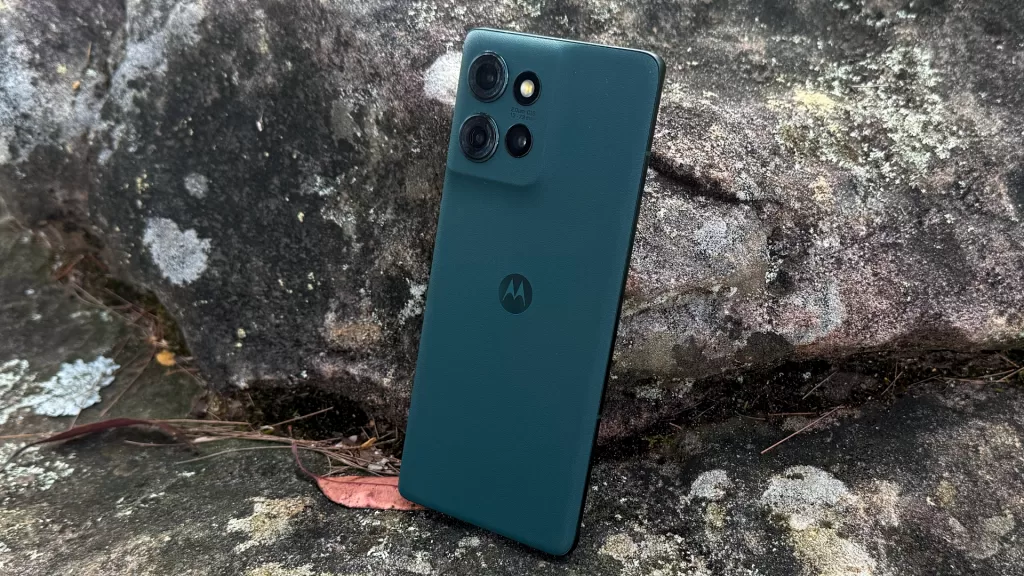
The Motorola Edge 50 is a decent phone, but it’s hard to get past the fact that you can get a better phone for the same money – or maybe even less.
| Pros | Cons |
|---|---|
| Good battery life | Underperforms relative to other phones at its price |
| Choice of cameras is nice | 30x zoom is quite poor |
| Clean Android with Moto Actions | Two OS upgrades when the cheaper Neo gets five is… a choice. |
Score: 3/5
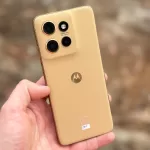 |
Buy The Motorola Edge 50 Neo! | Buy On Amazon |
In this review
Specifications
Design
Camera
Performance
Battery
Conclusion
Motorola’s Edge range sits as its mid-range series, above the Moto G but below its RAZR line of foldable phones.
I really rather loved last year’s Motorola Edge 40, so my hopes were high for its successor.
Sadly, while I won’t say that the Motorola Edge 50 is a bad phone, it’s a considerably more average one – and that’s a problem given it lacks that essential extra “wow” factor compared not only to the phones within its price bracket, but also cheaper Motorola Edge options – and especially the Edge 50 Neo.
Also read:
Motorola Moto G85 Review
Motorola Edge 50 Pro Review
Motorola Razr 50 Ultra Review
Motorola Edge 50 Fusion Review
Design
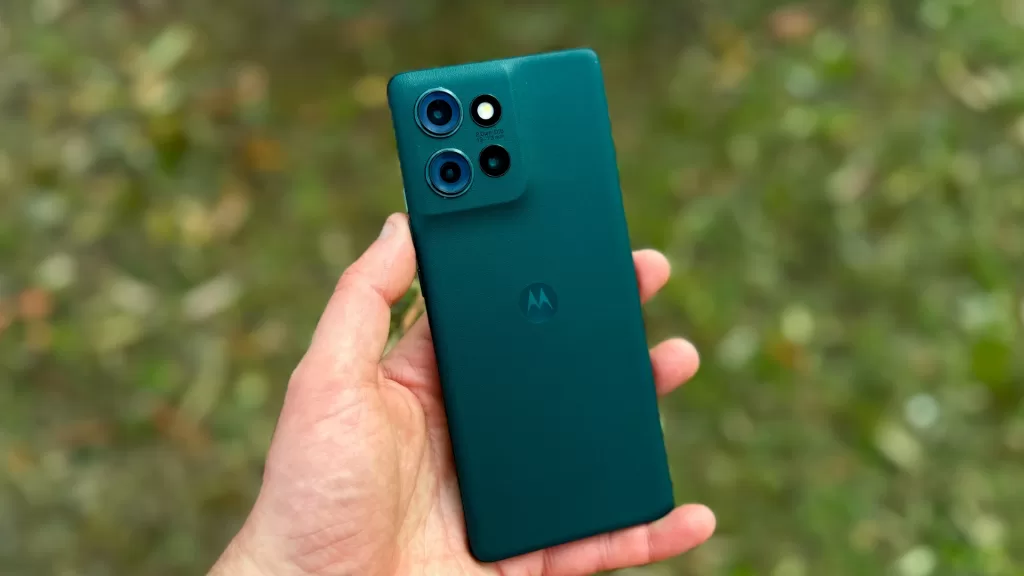
Locally the Motorola Edge 50 is available in Jungle Green, Peach Fuzz and Koala Grey finishes. The Koala Grey finish comes in “Vegan Suede” (AKA plastic), while the Peach Fuzz and Jungle Green come with Vegan Leather backs (AKA also Plastic, but with a feel that makes me shudder).
My own views on Vegan Leather are, I think, well known by now, and thankfully Motorola does supply a case in the box, though it’s a slender beast that won’t do all that much to protect the phone. It protected me from sensory twitchiness from the Vegan Leather, and maybe that’s enough.

In display terms, it’s packing a 6.7 inch 120Hz pOLED display that Motorola describes as having an “Endless Edge”… which fundamentally means that it’s a curved display on the right and left hand sides. That’s a size step up from the Motorola Edge 40’s 6.55 inch display, which also featured the same curved edge approach.
Curved displays are a contentious matter, with some people really disliking the feel and way the screen wraps on these displays. I don’t hate them, but if this is problematic for you, there’s no “flat” version of the Motorola Edge 50 – though that is true of the cheaper Edge 50 Neo. This won’t be the first time I reference that phone either, as I’m reviewing both simultaneously.

Controls and inputs are kept simple with volume and power buttons on the right, while biometrics are handled by a in-display fingerprint reader that’s given me no grief during my review period, though it was a little fussy on setup to register fingerprints.
Many of Motorola’s cheaper phones have opted for the simpler (and mostly meaningless) state of being “water repellent”, but it’s pleasing to note that the Motorola Edge 50 is rated at IP68 for water and dust resistance. As always this isn’t a licence to go scuba diving with it, but more of a sign that if you do accidentally get it wet, it should be able to survive.
Also read:
Why your waterproof phone isn’t actually “waterproof” the way you think it is
Camera
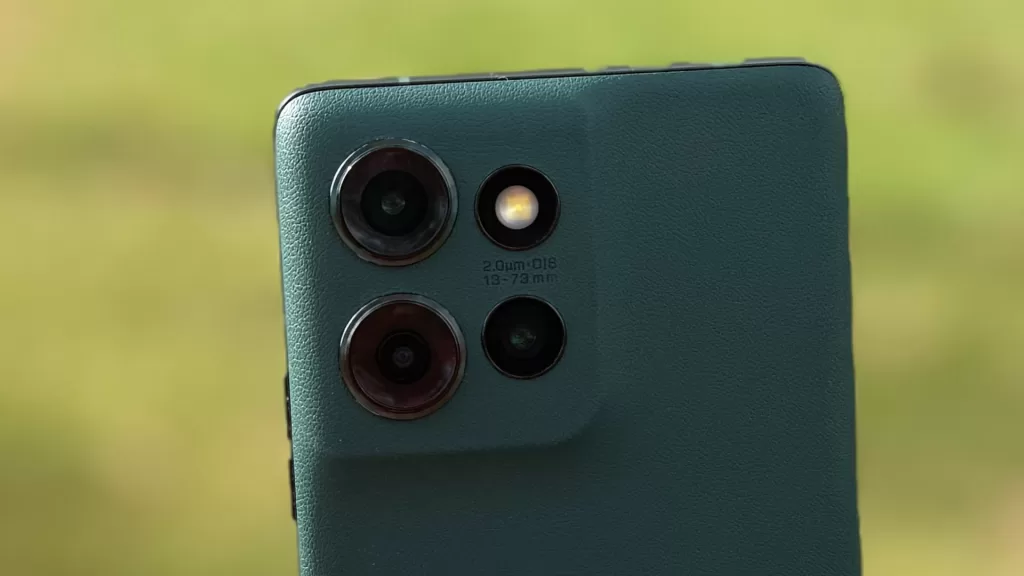
Camera specifications are one area where Motorola’s definitely upped the game for the Motorola Edge 50. Where the Edge 40 had a 50MP f/1.4 primary, 13MP ultrawide and 32MP front facing camera, the Edge 50 gets a 50MP Wide lens, 13MP Ultra-Wide and 10MP Telephoto 3x at the rear, complimented with a 32MP selfie snapper.
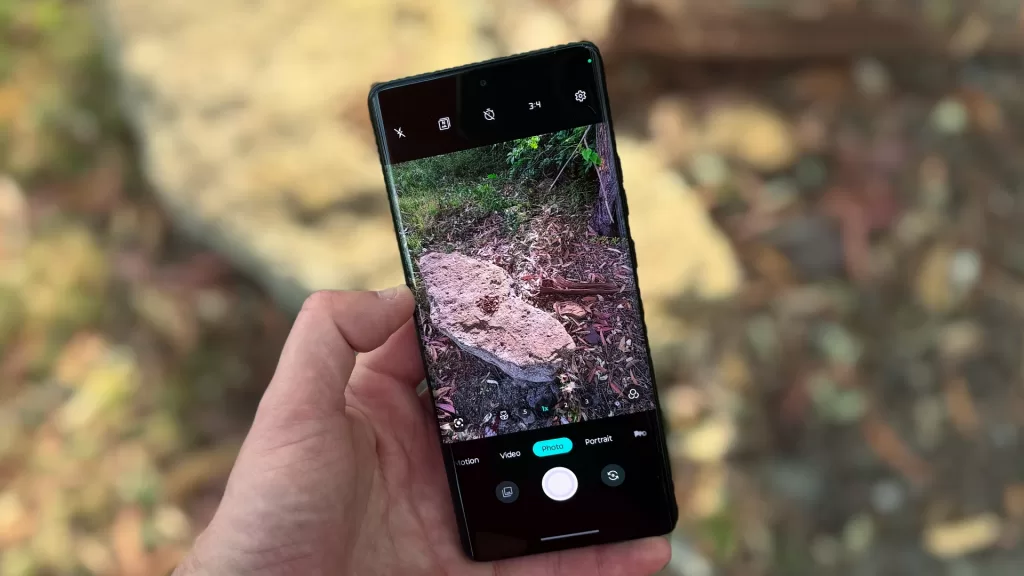
The telephoto is the interesting inclusion here, because at the $799 price point, you really don’t see too many telephoto lenses right now. You do have to temper your expectations somewhat at this price point however, especially if you want to push that zoom beyond its natural 3x telephoto limits.

At 3x zoom, while the framing isn't up to much, the scene is set and sharp. But what if I want a much closer shot of the Sulphur-Crested Cockatoo?
Motorola is usually quite conservative when it comes to digital hybrid zoom, but for the Edge 50 it pushes this all the way to 30x. Most phones at 30x digital do not fare well, but the Edge 50 really doesn’t impress at this level:

MY EYES! THE GOGGLES, THEY DO NOTHING!
The Edge 50 is otherwise an entirely serviceable camera phone, and quite appropriate to its price level, though again that can’t help but feel like a bit of a problem. You can get the same levels of “appropriate” camera performance for less money in other phones, though you won’t see a 3x telephoto lens in too many of them.
Motorola Edge 50 Sample Photos

The Motorola Edge 50 (mostly) avoids the oversaturated colour casts of many mid-range phones.

Portrait photos are decent, though it took ages to get Great Uncle Bulgaria not to blink.

Regular daytime shots are fine, but you can expect that from any phone above $200 these days.

Lower light shots -- and you wouldn't pick this as being in a darkened cabinet, would you? -- are likewise decent.

Neko does not wish to be photographed.
Performance
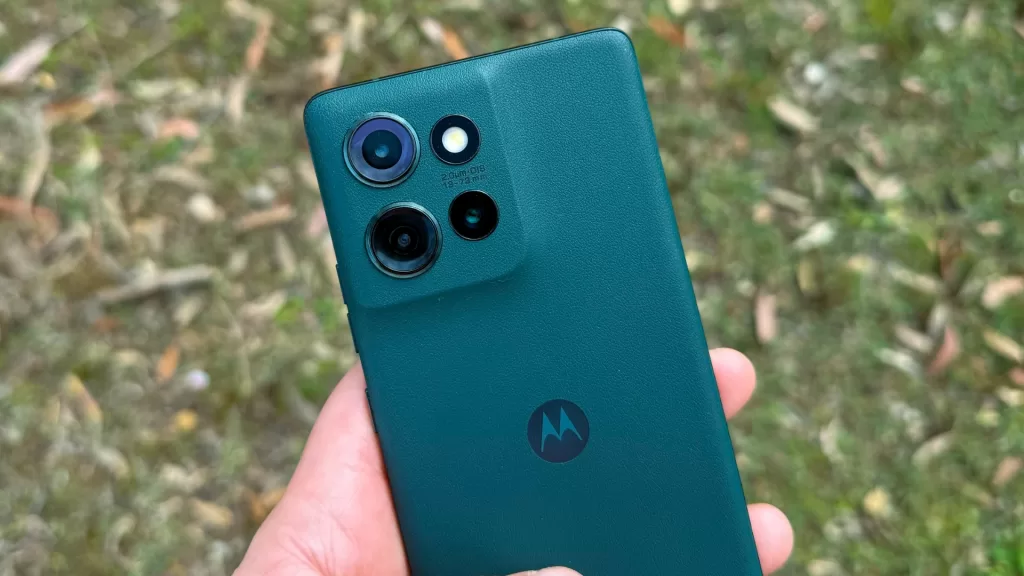
The Motorola Edge 50 is built around a Snapdragon 7 Gen 1 processor, appropriate enough at this price range right now, combined with a healthy 12GB of RAM and 256GB of storage. There’s no capacity for microSD expansion on the Motorola Edge 50, however.
On paper that’s a fine enough formula for a mid-range phone, and the simple truth here is that for most everyday Android tasks it’s perfectly adequate performer – but then that’s true for many Android phones that cost less than the Motorola Edge 50 does.
Here I turn to benchmarks for comparison, firstly with Geekbench 6’s CPU test, looking at similarly priced phones (at the time of writing) as well as the cheaper Motorola Edge 50 Neo:
It was surprising to me to find the Pixel 8a already selling for only about $50 more at some retailers than the Edge 50’s asking price, but the performance gulf there is not insubstantial. Even if you can’t find a lower-cost Pixel 8a, the Samsung Galaxy A55 outclasses it, and that’s a phone that’s cheaper than the Edge 50 is!
Also, there's just no getting past the fact that the Motorola Edge 40 benchmarks are better. That's... not great.
It’s an even less flattering story when we look at GPU performance:
None of this means that the Edge 50 has steam coming out of the sides if you’re running heavier duty apps, but it does point to it slightly underperforming at its price point.
Motorola sticks to its approach of offering up a mostly-clean Android OS interface with the typical “Moto Actions” courtesty of Motorola’s My UX launcher.
Annoyingly, however, it also sticks to Motorola’s less than impressive approach to OS upgrades, promising just two Android OS updates and three years of security updates, delivered every two months. It’s particularly galling because the Motorola Edge 50 Neo, which landed on my review desk at the same time and is cheaper comes with five OS upgrades and five years of bi-monthly OS upgrades. So you’re quite literally paying more for less!
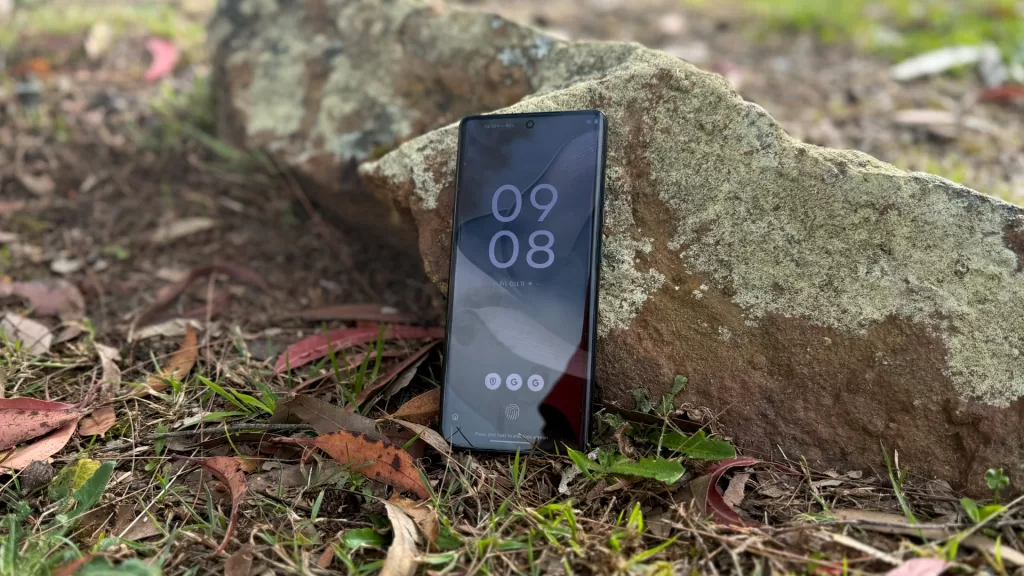
On the networks front, the Motorola Edge 50 is a 5G-capable handset, but only sub-6GHz as is all too common for Australian market phones. On the Telstra network in Sydney I get very predictable speeds out of essentially every 5G sub-6Ghz phone, between 200-400Mbps down, and the Motorola Edge 50 was no exception. It's nice to see Nano SIM and eSIM support on board the Motorola Edge 50.
Battery

Motorola doesn’t buck the trend for most Android phones right now, packing in a 5,000mAh battery inside the Motorola Edge 50’s frame. To test its comparative battery performance, I first turn to my standard YouTube battery test, running a 1080p video for an hour at maximum brightness and moderate volume – and here the comparison is quite favourable:
The line between these phones is slender, but having extra battery life is always good. It carries through in day-to-day operation, so unless you’re really busy on your phone, it should easily last through a day’s usage in most cases.
Unlike many of its competitors in the upper mid-range, Motorola still provides a charger in the box, and it's a nice one too. You get a 68W charger and USB-C cable for charging purposes. That will handle quite rapid charging, or you could opt for considerably slower 15W wireless charging.
Motorola Edge 50: Alex’s Verdict
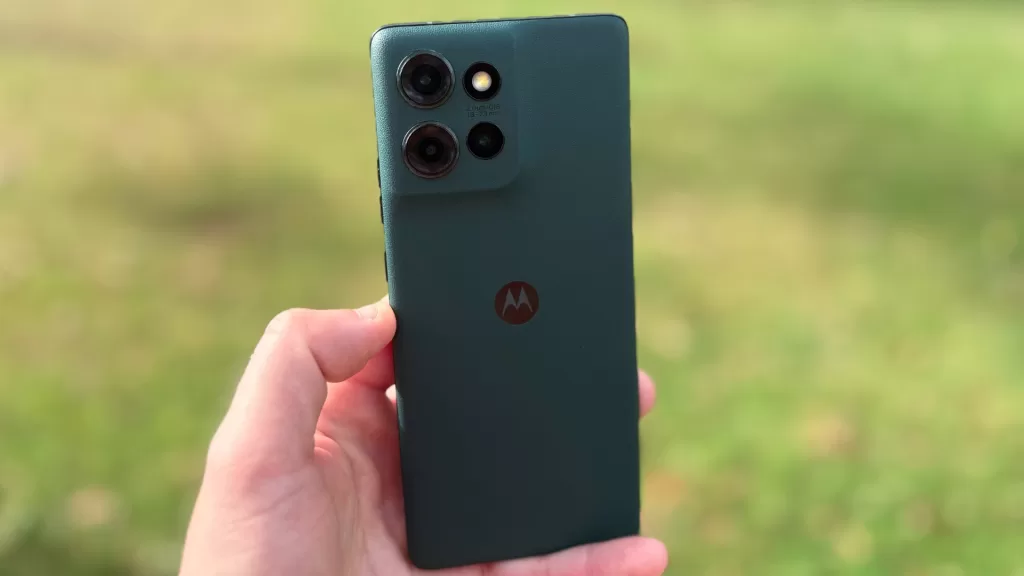
Having really enjoyed my time with the Motorola Edge 40 last year, I figured that all Motorola had to do was continue improving its recipe and I would stay happy.
That hasn’t happened, though Motorola has made some improvements especially around camera flexibility. The Motorola Edge 50 certainly isn’t a bad phone, but it’s a step down comparatively against the Edge 40, and it’s not helped by the existence of the Motorola Edge 50 Neo either.
Motorola Edge 50: Pricing and availability
The Motorola Edge 50 retails in Australia for $799.
 |
Buy The Motorola Edge 50 Neo! | Buy On Amazon |
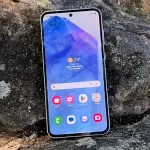 |
Buy The Samsung Galaxy A55! | Buy On Amazon |
Was this review useful to you? Support independent media by dropping a dollar or two in the tip jar below!




